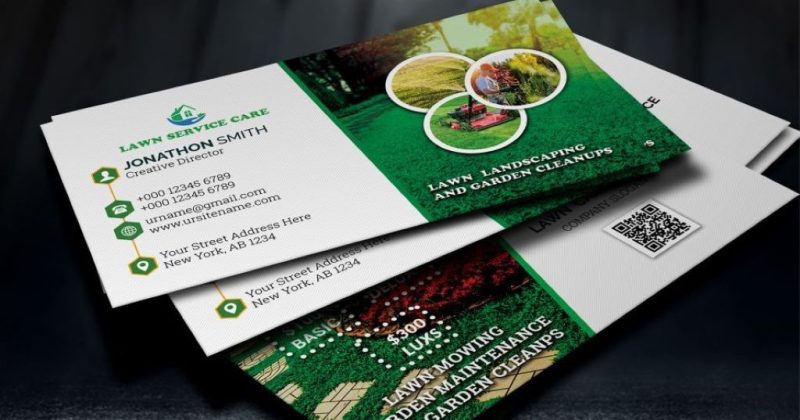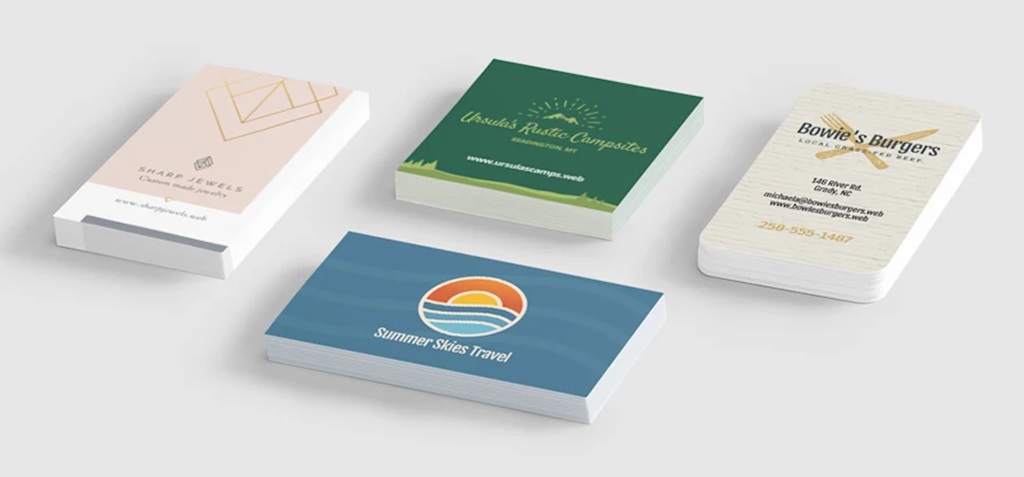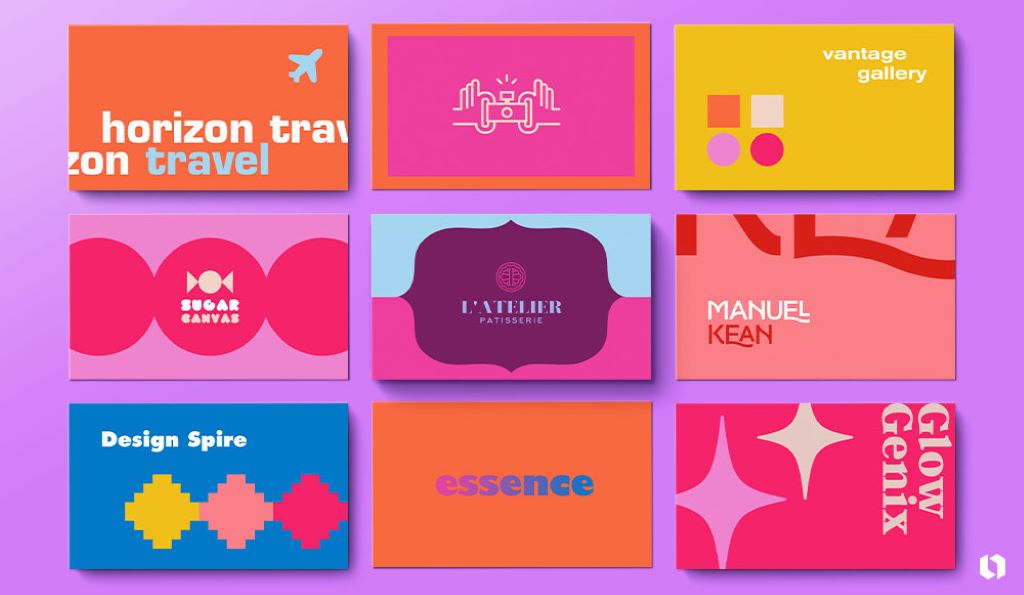Are you starting a landscaping business? One of the most important marketing materials you need is business cards. For landscapers, a business card is more than just a piece of cardstock with your name. It’s a chance to show off your skills and make potential clients take notice.
But with so many options and designs, how do you create landscaping business cards that attract new customers? Here’s what you need to know to make memorable cards that speak to your brand.
Focusing on the Basics First
Before getting creative with shapes and images, you must include some essential information on your landscaping business card. That way, when people meet you, they can quickly call or look you up online later.
Here are some must-haves for any landscaping business card:
- Company Name: Choose a unique but easy-to-remember name for your landscaping company. Put it front and center on your card.
- Contact Details: List your phone number, email address, and website.
- Location: Share your city, state, or service area so people know where you operate.
- Services: List your primary services like lawn care, garden design, maintenance, etc.
Getting these basics down first means your cards always provide value, even if the design is simple. Let’s look at how to make your landscaping business cards stand out.
Using Images and Colors to Showcase Your Skills
One of the best ways to create engaging landscaping business cards is to include visuals. Photographs, illustrations, or graphics related to your services help reinforce what you do.
For instance, you could include:
- A photo of a well-maintained lawn or stunning garden you designed. This immediately shows off your skills.
- An illustrated flower, shrub, or other plant. This ties into your landscaping services.
- Your company logo. Branding your cards consistently is vital.
- A green and earthy color palette. Browns, greens, and blues connect to nature.
The images you select should reflect the feel and style of your landscaping company. Are you more traditional and formal? Or relaxed and friendly? Pick photos and illustrations that communicate your approach.
Choosing the Right Shape and Size
Standing out from other landscaping pros starts with choosing the right card shape and dimensions. You don’t have to stick to boring square or rectangular cards. Consider:
- Die-cut cards: Get cards cut into exciting shapes like trees, flowers, houses, or gardening tools. This immediately grabs attention.
- Foldable cards: Fold-out Cards provide more space for info and visuals. Try a tri-fold or booklet style.
- Oversized cards: Go bigger than the standard size with postcard-style cards from 4×6” up to 5×7”. This gives room for eye-catching designs.
- Thick cardstock: Choose cards printed on 14pt to 16pt stock. The thickness makes them feel substantial in people’s hands.
Non-standard shapes and paper stocks let your landscaping cards physically make an impression before people even read your details.
Showcasing Texture With Print Techniques
Beyond shape and imagery, landscaping business cards can utilize print techniques to add visual interest through texture. Consider options like:
- Spot UV: This adds a glossy sheen over certain areas of your card, making elements stand out. Use it on your logo or photos.
- Embossing: This presses an image into the card to give it a raised, textured feel. It adds dimension to text or images.
- Foil stamping: Metallic foils like gold, silver, or copper can be stamped over text and graphics, making them shine and pop off the card.
- Raised ink: Using thick ink that rises off the cardstock adds texture. Pair this with earthy colors for a natural feel.
These finishes add depth and make people want to pick up and interact with your card, making the details more memorable.
Grabbing Attention With Unique Shapes and Materials
If you want to stand out, you can have landscaping business cards printed on unique materials and in unconventional shapes. Some ideas that are sure to grab attention include:
- Seed paper: This dissolvable paper has seeds embedded so recipients can plant their cards! Pick seeds for flowers, herbs, or vegetables.
- Wood: Slim pieces of wood like bamboo or birch can be printed. This natural material suits landscapers perfectly.
- Plantable cards: These contain soil and seeds right inside the card. Just add water, and it becomes a mini-plant.
- Stone: Slate, marble, or granite can be precision cut and engraved with your details for an extra-durable card.
- Metal: Brushed aluminum or stainless steel cards have a modern, high-end feel. Etch or deboss the metal for added effect.
Landscaping pros work with plants, soil, wood, and stone daily. Incorporating these natural elements into your cards takes your brand identity to the next level.
Perfecting Your Landscaping Business Card Design
You have many excellent options for creating unique, eye-catching landscaping business cards. It’s time to combine everything into a cohesive, polished design. Here are some tips:
- Please keep it simple: Don’t overload your card with too many photos, illustrations, or overly complex layouts. Let key elements stand out.
- Use white space: Balance images and text with sufficient blank space around them. This keeps the overall look clean.
- Limit text: Only include the most essential details. Leave off slogans and descriptions to avoid clutter.
- Pick cohesive fonts: For headings, subheads, and body text, choose font styles and sizes that complement each other.
- Double-check info: Carefully proofread all your contact info, addresses, etc., to prevent errors.
- Check the print quality: Review printer proofs and samples to ensure colors, images, and textures print clearly.
With an expertly designed card ready, it’s time to start networking and landing new customers!
Promoting Your Landscaping Business With Cards
An excellent business card only works if you use it to connect with potential clients. Here are some of the best ways to put your cards to work:
- Carry cards everywhere: Have cards ready in your wallet, car, jacket pockets, etc. You never know when you’ll meet someone.
- Hand out cards: Introduce yourself and give people in your neighborhood and community your card. Word of mouth is powerful.
- Ask for referrals: When working with clients, ask them to pass your card on to friends and neighbors who are looking for landscaping services.
- Leave cards: With the homeowner’s permission, leave some cards on their front porch or entryway table for visitors to take.
- Use as reminders: Mail cards along with maintenance or service reminders to stay top of mind with customers.
- Include with bids: Always attach your card to any proposals, bids, or quotes you provide.
- Give at events: Attend home shows, farmers’ markets, and other local events to meet and network with people.
With a solid marketing plan, your creative new landscaping business cards will attract excited new customers quickly.
Top Questions
What information should I include on my landscaping business card?
Include your company name, logo, phone number, website, email address, and location/service area. You can also list 2-3 main services, such as lawn care and tree trimming.
What size and shape of landscaping business card should I get?
Standard cards are 2”x3.5”, but larger 4”x6” postcard sizes stand out. Die-cut cards in unique shapes also grab attention.
Should I include photos on my landscaping business cards?
Photos help showcase your skills and style. One large image on the front or a collage on the back are great options. Make sure the resolution is high.
What is the best material for durable landscaping business cards?
For durability, choose thick 14pt-16pt cardstock. You can also use wood, metal, or stone for unique textured cards, but make sure they aren’t too thick.
Should I use special printing techniques on my landscaping cards?
Spot UV, embossing, debossing, foil stamping, and other finishes add visual interest and texture, making cards more memorable.
Conclusion
As you can see, landscaping business cards have enormous potential to showcase your brand and win new customers. Critical steps for success include:
- Include vital contact information and services
- Use photos, graphics, and color schemes that reflect your style
- Opt for thicker, high-quality cardstock and printing
- Consider dimensional shapes, specialty materials, and embellishments
- Perfect the layout with organized information flow and ample white space
- Promote your business by consistently handing out cards and asking for referrals
- Answer common FAQs to educate potential customers on why your cards stand out
With a well-designed landscaping business card that speaks to your brand, you can make memorable first impressions and grow your client base. Start brainstorming card designs and stock that reflect your services and style. Look for local print shops that offer cutting-edge card printing techniques to bring your creation to life.
Then get out there, hand out those sleek cards, and watch the calls flooding in. Exploring the best Etsy business ideas for newbies reveals a world of opportunity, where a small but mighty marketing piece like a business card, when used strategically, can yield tremendous rewards, ensuring yours is the most eye-catching card in the stack. Before you know it, your company name will rise to the top of the local landscaping scene.
So, boost your brand and get more clients with customized landscaping business cards. Follow this guide, and prospects will line up to work with the most memorable and professional landscaper in town – you!



